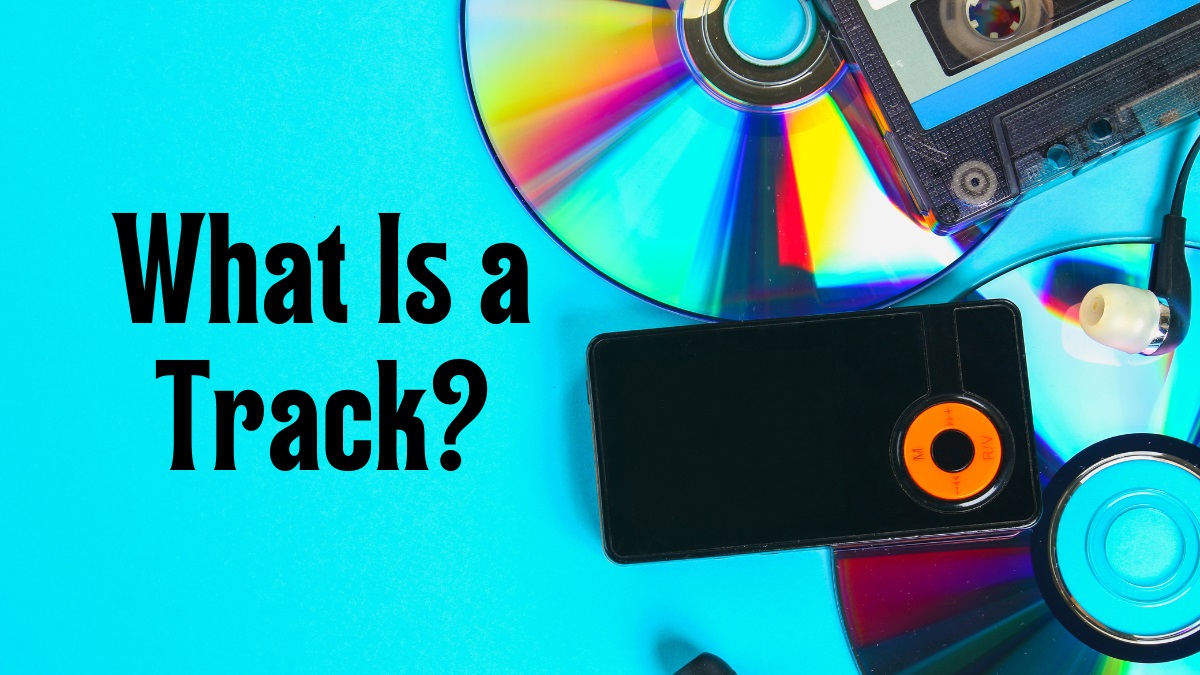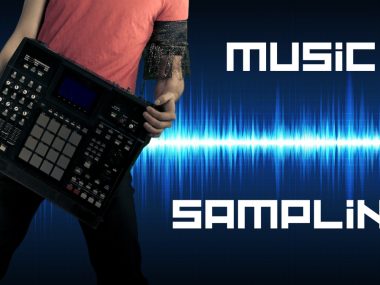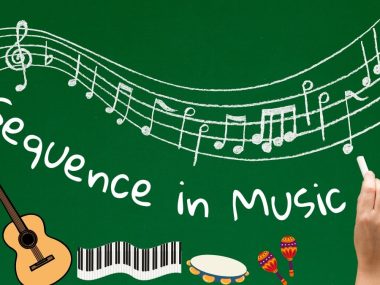Are you interested in exploring the captivating world of music production? Do you dream of laying down your own tracks and creating beautiful songs and melodies? Then, this post is for you!
My aim today is to give you a basic understanding of the music-making process. Producing a wonderful song or piece of music means knowing which tools to use and when to use them. After all, it’s every musician’s dream to create a quality track people will enjoy listening to time and again.
Yet, before I get into that, let’s start with a common question: what is a track in music? What’s the difference between a track and a song? How are tracks made?
Below, you’ll find all the answers you’re looking for. I’ve also added a few tips and techniques to help you start off on the right foot.
Let’s dive in.
What Is a Track in Music?

Songs have been referred to as tracks since 1904. Back then, each song was etched into the magnetic strip, or section, of the vinyl record. Then, tapes appeared, followed by CDs and other media.
Today, we still refer to a track as a song or a piece of music as long as it’s on physical media. So, the entire tape, CD, or record consists of a collection of tracks.
Nowadays, media is usually stored as mp3 files. These haven’t been etched into any album, so they’re not referred to as tracks.
Sequencer
Besides the basic definition, there are other meanings when we refer to the term ‘track’ in music. Sometimes, we use the word ‘track’ to refer to a group of control commands within a sequencer.
This sequencer is recorded exactly like an audio track. At times, it’s also recorded by controlling one synthesizer over a single MIDI channel.
Band Track
Tracks often refer to Band Tracks. These are the parts of a song that are recorded without the vocals. It includes the lead vocal, as well as any background vocals.
Magnetic Band
One way the term ‘track’ is used in music is about the section of the magnetic surface of a disc. Usually, the disc consists of a circular band placed at a fixed distance from its center.
What Is Tracking?
In tracking, different instruments are recorded separately. Tracking is the same as recording the song. Yet, it’s usually done in stages and referred to as multi-track recording.
The first part of the track acts as a guide for the additional instruments to follow along with. It’s mostly more of a tempo or beat to start up the melody. This can be a metronome or a pre-recorded drum loop.
Tracking also allows you to get creative and add in some vibey effects. Check out a few of these effects you can use in real-time:
- Waves Tune Real-Time: corrects and tunes vocal for a natural, smooth pitch
- Vocal Blender: for tracking and mixing pop, R&B, and hip-hop
- OVox: offers many effects, including vocal morphing, vocoder, harmonizing, and talkbox
What Is a Click Track?
A click track is ideal for synchronizing sound recordings. It’s commonly used in the music industry to boost productivity and enhance precision. Many producers use click tracks as a way to make sure everything is in sync.
It also works to keep live performances and recorded files in perfect time. This allows musicians to remain synced-up throughout the whole performance. A band will usually have the click track in their in-ear headphones so everyone follows along with it.
The biggest advantage of having a click track is it provides performances with a tempo guide. In other words, everyone knows exactly where they are with respect to the other musicians.
A second benefit is that click tracks make it easier for each musician to record separately. Then, the producer combines everything into one final cut. This almost offers an endless array of editing possibilities.
What Is a Reference Track?
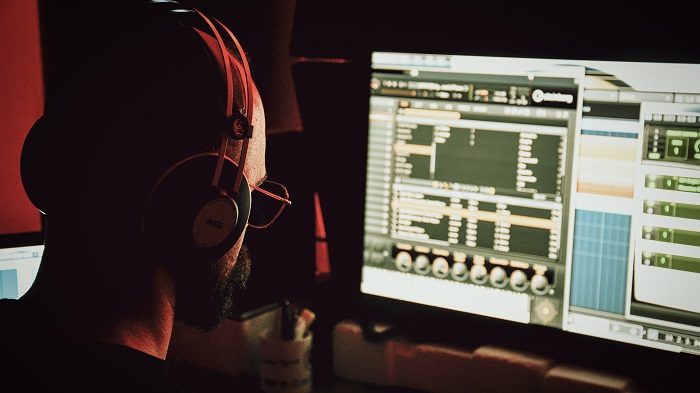
Reference tracks are an efficient and reliable way to create something original. Yet, it mainly depends on referring to previous songs, and seeing what worked for them and what didn’t.
Let’s be honest, virtually each single lead melody or chord progression has been tried before. So, how do musicians create new, original pieces?
Easy. First off, they begin the process by taking a piece of music that resonates with them as artists.
Then, to avoid stealing anyone’s idea, they change a couple of notes or invert some chords, and voila! They’ve created an original song.
The trick to using reference tracks is to borrow tiny pieces for several songs or pieces of music.
From one, you can take part in the melody. Then, from another, you can borrow a drum groove. The way you blend and merge these parts is what makes your work unique.
Here are a few benefits of using reference tracks:
- Increases creative options
- Boosts confidence when comparing your work to professional-sounding mixes
- Provides a guide to tonality during the mixing stage
- Acts as a roadmap to help’ build a solid song structure
What Is a Scratch Track?
Tracking typically applies to songs that remain at a constant pace. So, what do you do with songs that change their tempos throughout the entire performance?
For songs with varying tempos, the music producer creates a scratch track. This is when one or more instruments are recorded as the guide, rather than just a steady tempo. Then, every time you record a new track, you can hear the ones you recorded before it.
Scratch tracks also refer to preliminary audio files or a rough play-through of one section of a song. It’s usually used as a guide during the recording of the other instruments.
For example, when you’re recording drums, you can give the drummer a scratch guitar to play along to. Most of the time, the scratch track doesn’t end up as part of the final audio file.
Creating a scratch track has several advantages. The most important is it does away with the pressure of recording a final cut. As a result, musicians perform at their best without overanalyzing every move.
What Is a Guide Track?
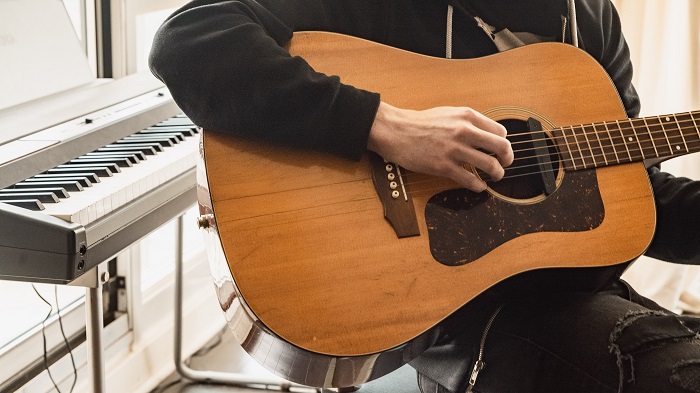
Musicians use guide tracks to record the vocals along with one instrument, which is usually a piano or guitar. Guide tracks are especially useful for drummers since they’re the first ones to record.
Producers use guide tracks as a reference point for the music. It helps keep everything flowing and consistent.
One of the benefits of creating a guide track is it sets the tempo for the entire song. It also helps set up the structure that you want the final recording to sound like.
What Is a Backing Track?
Backing tracks are how musicians add parts to their work that would be difficult to perform live. This includes choir parts or string sections, which are recorded in the studio.
These tracks are usually MIDI or audio recordings. They’re basically a pre-recorded vocal or instrumental accompaniment for the musician.
Backing tracks are great for reproducing sounds that can be impractical to do live. Another benefit is that they’re ideal for artists working with small budgets. Musicians also use backing tracks when performing in venues with space or sound restrictions.
How to Record a Music Track?
With so many technological advances, recording an audio track has never been simpler. Whether you’re recording at home or in a studio, here are some steps to make your track sound clean-cut and professional.
1. Start with a Guide or Scratch Track
This provides other instruments something to follow along to. Having a pre-recorded drum loop makes more sense. After all, it’s the drummers who are the ones keeping the tempo in check.
2. Record the Rhythm Section
After the guide track, the most important part is the rhythm section. It’s the foundation of any piece of music.
The rhythm section consists of drums, tambourines, or percussion. Some producers opt for other instruments to create rhythms, such as acoustic or bass guitar. These are the instruments everyone else follows along to.
3. Record the Chord Structure
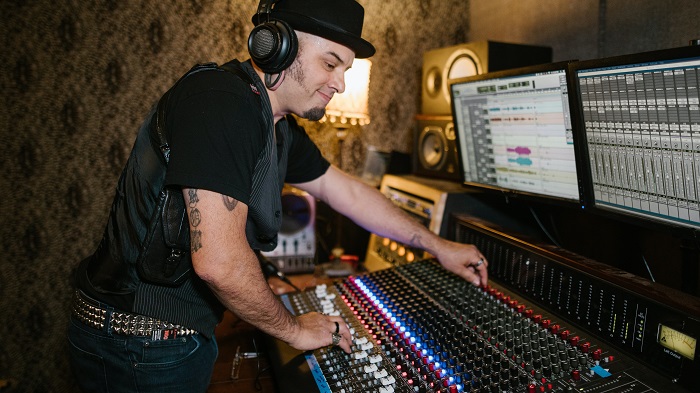
The chord structure is another word for harmony. A good harmony is easy once you’ve created a good foundation, or rhythm section, for your musical piece.
For a chord structure to work, producers can add certain features to tie everything together. Choosing what to include depends largely on the type of song.
Here are a few popular choices:
- Piano
- Rhythm guitar
- Horns
- Synths
4. Record the Melodies
The melody is when several instruments are combined into one harmonized sound. When you’re recording a track, start with the dominant sound. This can be the lead vocals or guitar.
After that, add in the supporting melodies to create a more harmonized sound.
5. Add Some Flair
It’s time to put those finishing touches to the song. Adding some fun and exciting fillers gives the music a unique flair and distinct sound.
These fillers can range from:
- Piano fills
- Percussion fills
- Sound effects
- Background vocals
